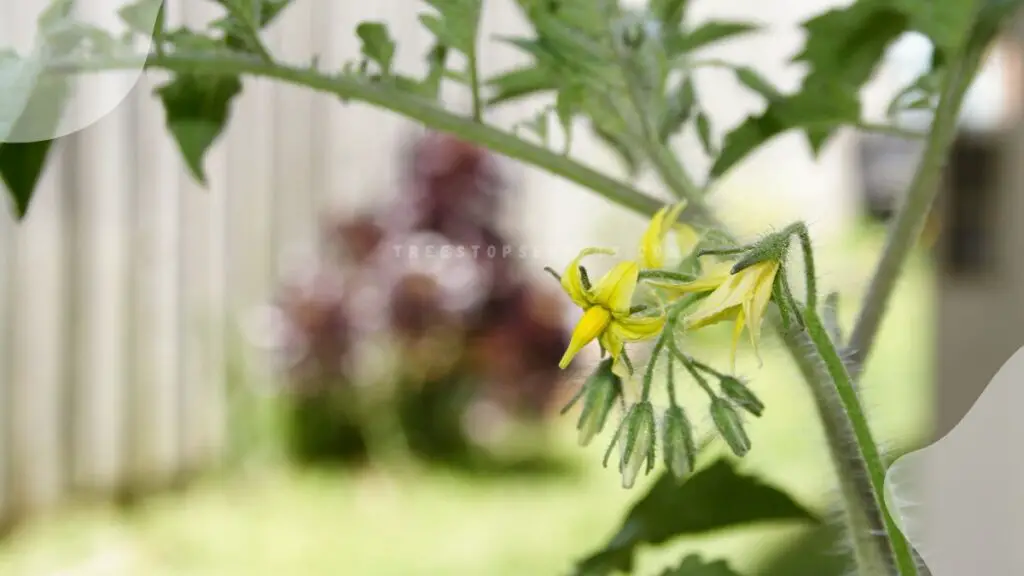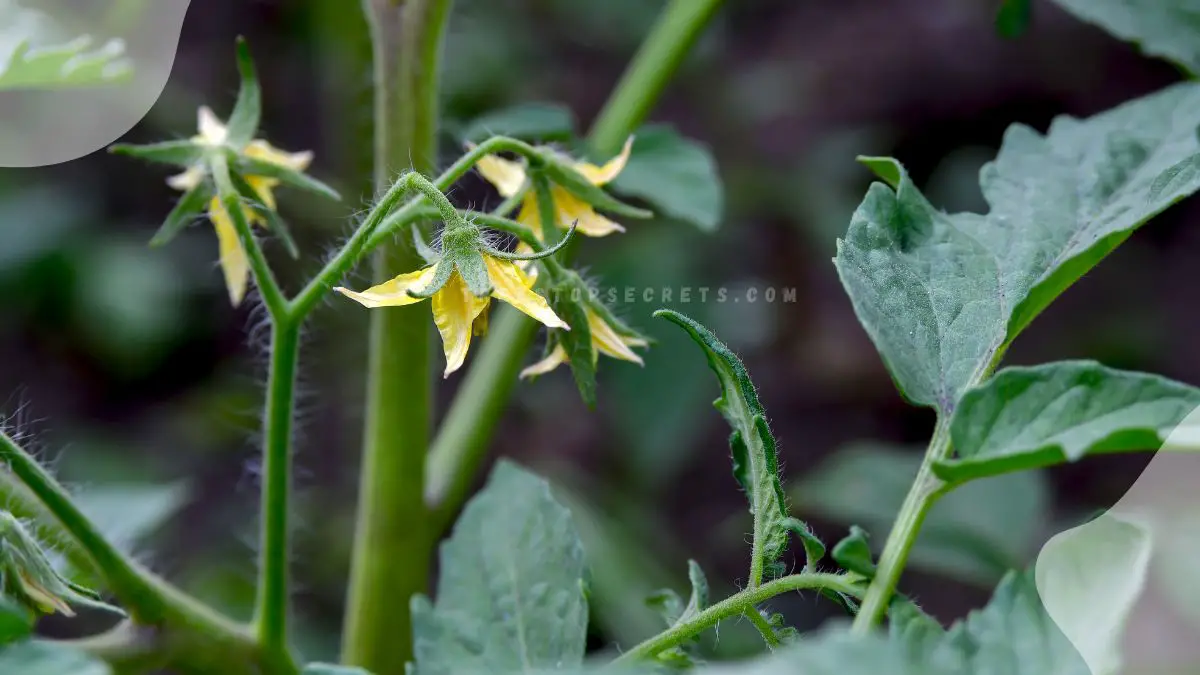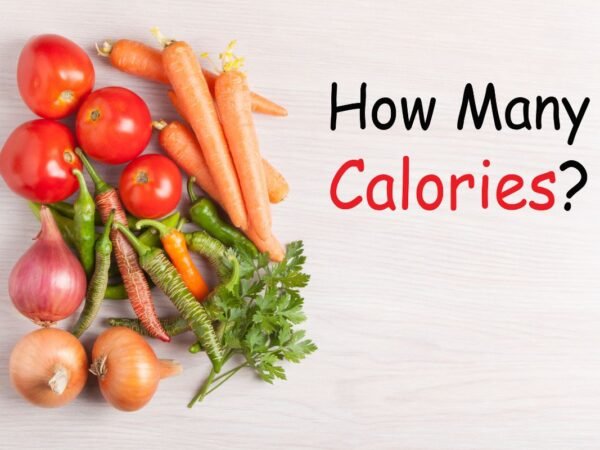Tomato plants flowering but not yielding fruit can be a frustrating ordeal for gardeners. Understanding the reasons behind this contrast is crucial to ensure a bountiful harvest. From inadequate pollination and extreme temperatures to nutrient deficiencies, several factors can contribute to this perplexing situation. By addressing these issues promptly, you can optimize your tomato plant's fruit production and overall health.
Key Takeaways
- Understand the Issue: Tomato plants may flower but not set fruit due to various reasons.
- Identify Causes: Blossom drop in tomato plants can be caused by factors like temperature fluctuations, inadequate pollination, or stress.
- Pollination Importance: Poor pollination can lead to blossom drop, hindering fruit development in tomato plants.
- Implement Solutions: Address blossom drop by providing consistent watering, shelter from extreme temperatures, and encouraging pollinators.
- Prevent Future Problems: Maintain optimal growing conditions for tomato plants to prevent blossom drop and ensure successful fruit set.
Why Tomato Flowers Don't Set Fruit
Blossom Drop Basics
Blossom drop occurs when tomato flowers fall off without setting fruit, impacting tomato plant productivity. Understanding this concept is crucial for successful tomato cultivation. Unpollinated tomato blooms are a common reason behind this phenomenon. The absence of proper pollination can lead to flower abortion and hinder fruit development.
Common Stress Factors
Temperature fluctuations play a significant role in causing blossom drop in tomato plants. Sudden changes in temperature, especially extreme heat or cold, can disrupt the pollination process, resulting in failed fruit set. irrigation issues such as overwatering or underwatering can stress the plants, leading to blossom drop.
- Pros:
- Helps identify underlying issues affecting tomato plant health.
- Allows for targeted solutions to mitigate stress factors and promote fruit set.
- Cons:
- Requires close monitoring of environmental conditions.
- May necessitate adjustments in watering practices for optimal plant growth.
Variety Traits
Heirloom and hybrid tomato varieties exhibit differences in their susceptibility to blossom drop. Hybrid tomatoes are often bred for disease resistance and higher yields but may be more prone to blossom drop under certain conditions. On the other hand, heirloom tomatoes, known for their unique flavors and characteristics, may have better tolerance to environmental stressors like temperature fluctuations.
- Heirloom Tomatoes:
- Known for their rich flavors and diverse shapes and colors.
- Tend to be more resilient to fluctuations in growing conditions.
- Hybrid Tomatoes:
- Bred for specific traits such as disease resistance and uniformity.
- May require more consistent care to prevent blossom drop.
Key Causes of Blossom Drop
Insufficient Light
Insufficient light can hinder tomato plants' ability to produce fruit. Adequate light is crucial for blossom development and subsequent fruit formation. Without enough light, flowers may drop prematurely, leading to a lack of fruits. To optimize light exposure, place tomato plants in areas with direct sunlight for at least six to eight hours daily. Consider using artificial grow lights to supplement natural light if needed.
Inadequate Water
Proper watering is essential to prevent blossom drop in tomato plants. Lack of water can cause flowers to abort, resulting in poor fruit set. Adjust watering practices based on the plant's needs, ensuring the soil remains consistently moist but not waterlogged. Monitor the soil moisture levels regularly and water deeply when necessary to promote healthy fruit development.
Extreme Temperatures
Extreme temperatures can trigger blossom drop in tomato plants. Ideal temperature ranges for fruit setting typically fall between 65°F to 85°F. To prevent flower drop due to temperature fluctuations, consider providing shade during hot days and using row covers or cloches to protect plants from cold snaps. Maintaining a stable temperature environment is crucial for successful fruit production.
Excess Nitrogen
Excessive nitrogen levels can impede flower production in tomato plants. Nitrogen fertilizers, when overused, can disrupt the balance needed for proper fruit set. To avoid nitrogen-related issues, opt for balanced fertilizers with equal parts of nitrogen, phosphorus, and potassium. Regularly test the soil to determine nutrient levels and adjust fertilizer applications accordingly for optimal fruit development.
Pollination Challenges

Poor Pollination Explained
Poor pollination in tomato plants can significantly impact fruit production. When bees fail to transfer pollen, fruits may not form properly. Factors like adverse weather conditions and lack of pollinators contribute to inadequate pollination. This results in deformed or fewer fruits.
Inadequate pollination affects both the quality and quantity of fruits. Without proper pollination, tomatoes may develop irregular shapes or remain small in size. A lack of pollination leads to a lower yield, reducing the overall harvest from the plants.
Improve Pollination Steps
To enhance pollination in tomato plants, consider planting flowers that attract bees nearby. These flowers will encourage bee activity around your tomato plants, leading to better fruit set. Avoid using pesticides that harm bees, ensuring their population remains healthy for effective pollination.
Manual intervention, such as gently shaking tomato plant stems to release pollen, can also improve fruit production. By mimicking the action of bees, this method helps distribute pollen within the flowers, increasing the chances of successful pollination.
- Steps to Improve Pollination:
- Plant bee-attracting flowers near tomato plants.
- Avoid using harmful pesticides to protect bee populations.
- Gently shake tomato plant stems to aid in pollen distribution.
- Benefits of Manual Intervention:
- Enhances fruit set by promoting efficient pollen transfer.
- Provides a backup solution when natural pollinators are scarce.
Solutions for Blossom Drop
Adjusting Water Levels
Proper watering is crucial for optimal fruit set in tomato plants. Inconsistent watering can lead to blossom drop, hindering fruit production. To prevent this, ensure consistent moisture levels by watering deeply but infrequently. Avoid overwatering, as it can result in root rot and nutrient leaching. Drought stress can cause flower abortion, so monitor soil moisture levels regularly.
Balancing Fertilization
Balanced fertilization plays a key role in tomato fruit development. Inadequate or excessive fertilization can negatively impact flower and fruit production. Test your soil to determine its nutrient levels and adjust fertilization accordingly. Provide a balanced mix of nitrogen, phosphorus, and potassium to promote healthy growth and fruit set in tomatoes.
Temperature Control
Maintaining optimal temperatures is essential to prevent blossom drop in tomato plants. Extreme temperatures, both high and low, can disrupt flower and fruit development. Protect your plants from temperature fluctuations by using mulch to regulate soil temperature. Consider using shade cloth during hot weather to shield plants from excessive heat.
Enhancing Pollination
Promoting pollination is vital for improving fruit production in tomato plants. Encourage pollinator activity by planting pollinator-friendly flowers near your tomato plants. You can also gently shake the plants to simulate wind and aid in pollen transfer. Creating a diverse garden ecosystem attracts beneficial insects that aid in pollination.
Preventing Future Issues
Right Plant Spacing
Proper plant spacing is crucial for maximizing fruit set in tomato plants. When plants are overcrowded, it can impede airflow and sunlight, leading to poor flower and fruit development. To prevent blossom drop, ensure a spacing of at least 18-24 inches between each tomato plant.
Overcrowding can result in competition for nutrients and sunlight, hindering the plants' ability to produce healthy fruits. By maintaining adequate plant spacing, you allow each plant to receive sufficient resources for optimal growth and fruit production.
- Insufficient spacing can lead to decreased airflow and light penetration.
- Proper plant spacing promotes better pollination and fruit development.
Optimal Light Exposure
Adequate light exposure is essential to prevent blossom drop in tomatoes. Insufficient sunlight can inhibit the photosynthesis process, affecting flower and fruit production negatively. To ensure optimal light exposure, place tomato plants in a location where they receive at least 6-8 hours of direct sunlight daily.
Inadequate light can lead to poor flower formation and result in reduced fruit set. By positioning your tomato plants in a sunny spot, you enhance their photosynthetic activity, promoting robust flower development and increased fruit yield.
- Lack of sunlight can cause stunted growth and low fruit production.
- Optimal light exposure enhances the plants' overall health and productivity.
Regular Watering Schedule
Maintaining a regular watering schedule is vital for preventing blossom drop in tomato plants. Inconsistent watering can stress the plants, leading to flower abortion and poor fruit development. To establish a consistent routine, water your tomato plants deeply once or twice a week, ensuring the soil remains evenly moist but not waterlogged.
Fluctuations in soil moisture levels can disrupt nutrient uptake and impact flower formation in tomatoes. By adhering to a consistent watering schedule, you provide the plants with the necessary hydration for healthy flower development and robust fruit set.
- Inconsistent watering can cause physiological stress and reduce fruit quality.
- A regular watering routine supports proper nutrient absorption and flower retention.
Summary
Understanding why tomato plants flower but fail to set fruit is crucial for successful gardening. Key causes such as temperature fluctuations, lack of pollinators, and inadequate care can lead to blossom drop. By addressing these issues and implementing solutions like hand pollination and proper watering, you can prevent future problems and ensure a bountiful harvest. Remember to monitor your plants closely, provide the necessary support, and enjoy the fruits of your labor.
Don't let blossom drop hinder your tomato plant's productivity. Take proactive steps to nurture your plants, promote pollination, and troubleshoot any issues that arise. Your dedication and care will yield healthy tomato plants with abundant fruits. Happy gardening!
Frequently Asked Questions
Why do tomato plants flower but no fruit?
Tomato plants may not produce fruit due to inadequate pollination, extreme temperatures, lack of sunlight, or nutrient deficiencies. Ensure proper care and consider hand-pollination to improve fruit set.
What are the key causes of blossom drop in tomato plants?
Blossom drop in tomato plants can be caused by stress factors like temperature fluctuations, excessive nitrogen, insufficient sunlight, water stress, or lack of pollination. Address these factors to prevent blossom drop.
How do pollination challenges affect tomato fruit production?
Poor pollination can lead to reduced fruit set in tomato plants. Factors such as lack of pollinators, weather conditions hindering pollination, or improper plant spacing can contribute to this issue. Encourage natural pollinators and consider hand-pollination methods.
What are some solutions for blossom drop in tomato plants?
To address blossom drop, ensure consistent watering practices, provide adequate sunlight exposure, avoid over-fertilization with nitrogen, maintain optimal temperature conditions, and promote natural pollinators. These measures can help improve fruit set in tomato plants.
How can I prevent future issues with tomato plants not setting fruit?
Prevent future problems with fruit set by maintaining a balanced fertilization schedule, ensuring proper watering techniques, monitoring temperature fluctuations, promoting good airflow around plants, and encouraging pollinator activity. Consistent care and attention to plant needs can help prevent fruiting issues.
Image Source: Paid image from CANVA



